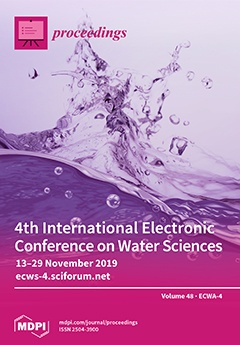Need Help?
Proceedings, 2020, ECWS-4
The 4th International Electronic Conference on Water Sciences
online | 13–29 November 2019
Volume Editors:
Marco Franchini, University of Ferrara, Italy
Bruno Brunone, University of Perugia, Italy
- Issues are regarded as officially published after their release is announced to the table of contents alert mailing list.
- You may sign up for e-mail alerts to receive table of contents of newly released issues.
- PDF is the official format for papers published in both, html and pdf forms. To view the papers in pdf format, click on the "PDF Full-text" link, and use the free Adobe Reader to open them.
Cover Story (view full-size image):
This issue of Proceedings is collection of papers presented at the 4th International Electronic Conference on Water Sciences (ECWS-4) on Urban Hydraulic Cycle in a Climate Changing Environment, which
[...] Read more.
This issue of Proceedings is collection of papers presented at the 4th International Electronic Conference on Water Sciences (ECWS-4) on Urban Hydraulic Cycle in a Climate Changing Environment, which was organized and held on 13–29 November 2019. This issue aims at deepening the discussion on issues related to managing water resources with a special focus on developing countries and water supply as well as sewer and wastewater treatment systems. We would like to thank all the authors and participants along with the external reviewers for their contribution.
Previous Issue
Next Issue
Issue View Metrics
Multiple requests from the same IP address are counted as one view.



